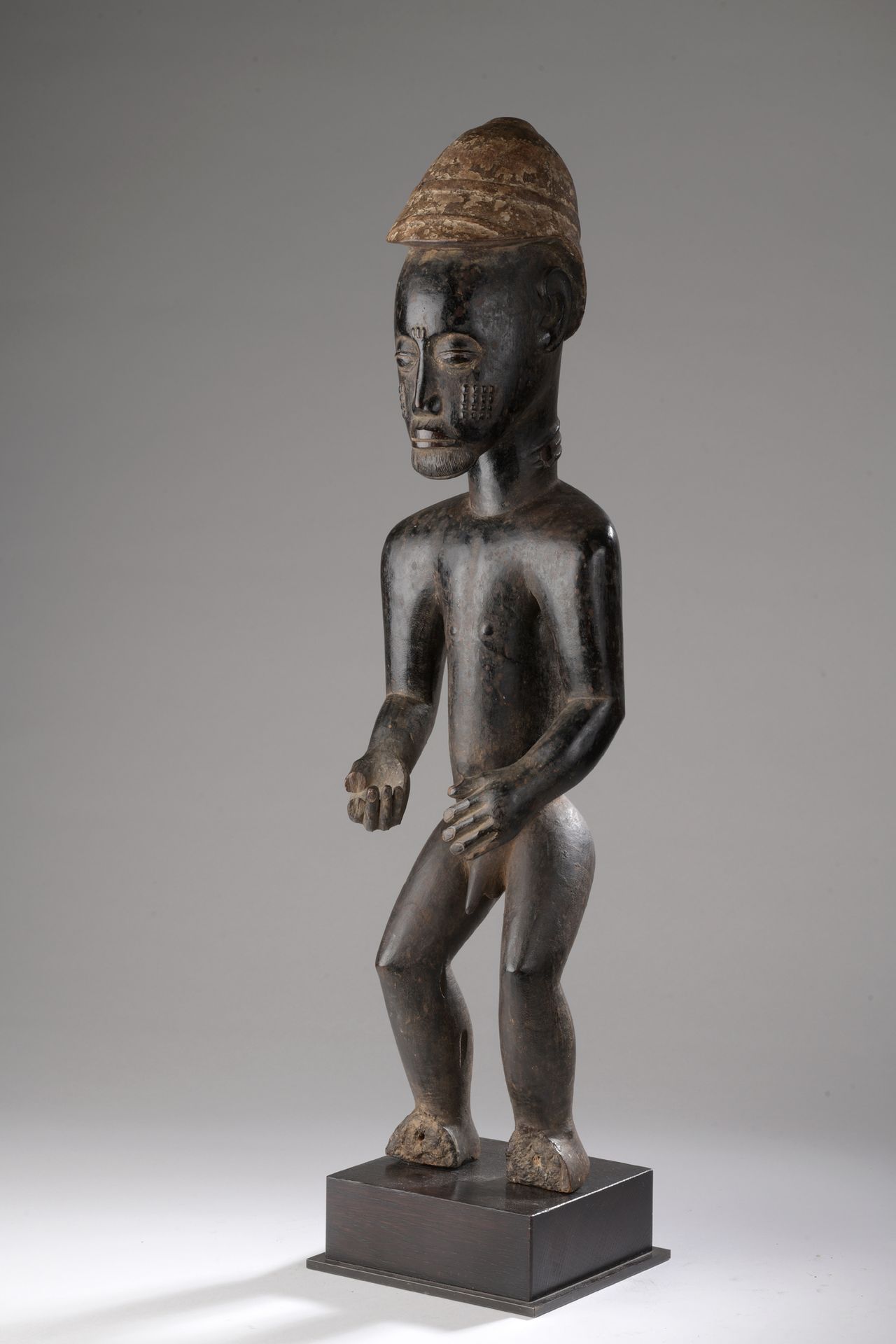Description
BAOULE STATUE, Ivory Coast Wood with a brownish-black patina in places, pigments, accidents and old missing parts. H. 58 cm Important Baoule sculpture, representing a male figure with hieratic features. The slender bust rests on slightly bent legs, the arms away from the pelvis, bent and extended by hands with differentiated positions. The shoulders are powerful, the back crossed by a deep spinal groove, a groove that is also found in the region of the salt pans. The face is detailed with a wide coffee bean gaze, on either side of a straight nose with noted wings. The closed mouth is extended by a combed beard. Only the face and neck are scarified. The ears, described in a very graphic roll, are placed high, as an intermediate element with the colonial helmet covering the effigy and the smooth forehead. The shape of the helmet allows us to situate this sculpture around 1910-1930, a time when, according to Susan Vogel, it symbolizes prosperity, and when the Baoule were "pacified" (In For Spirits and Kings, p. 74). The preciousness of the face, the dark lacquer with a patina from handling, its brilliance at the points of contact, and the elegant proportions of the work as a whole make it a very fine example of the type.
202
BAOULE STATUE, Ivory Coast Wood with a brownish-black patina in places, pigments, accidents and old missing parts. H. 58 cm Important Baoule sculpture, representing a male figure with hieratic features. The slender bust rests on slightly bent legs, the arms away from the pelvis, bent and extended by hands with differentiated positions. The shoulders are powerful, the back crossed by a deep spinal groove, a groove that is also found in the region of the salt pans. The face is detailed with a wide coffee bean gaze, on either side of a straight nose with noted wings. The closed mouth is extended by a combed beard. Only the face and neck are scarified. The ears, described in a very graphic roll, are placed high, as an intermediate element with the colonial helmet covering the effigy and the smooth forehead. The shape of the helmet allows us to situate this sculpture around 1910-1930, a time when, according to Susan Vogel, it symbolizes prosperity, and when the Baoule were "pacified" (In For Spirits and Kings, p. 74). The preciousness of the face, the dark lacquer with a patina from handling, its brilliance at the points of contact, and the elegant proportions of the work as a whole make it a very fine example of the type.
